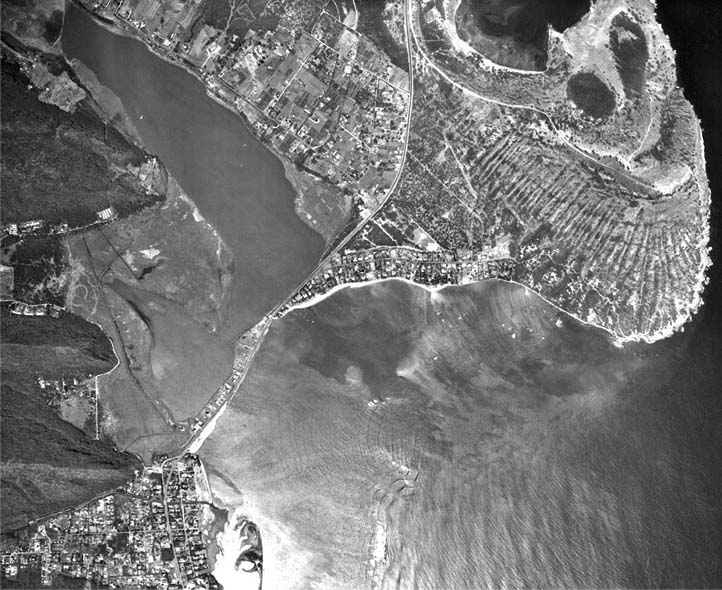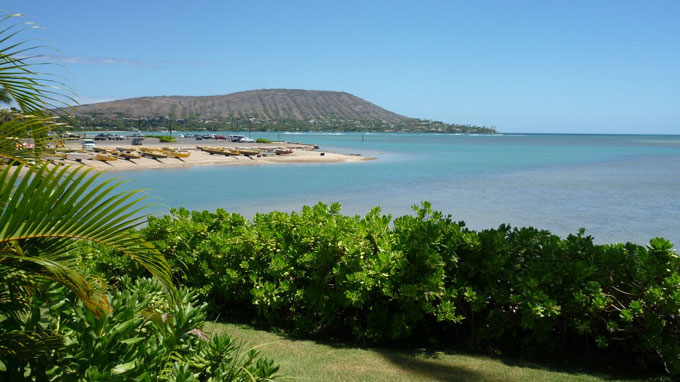Some suggest the spelling was the way Captain James Cook spelled the Island chain he “discovered” in 1778, and the name of the island where he eventually died.
However, we need to remember that Cook first sighted Oʻahu on January 18, 1778. On February 2, 1778 his journal entry named the island group after his patron: “Of what number this newly-discovered Archipelago consists, must be left for future investigation. … I named the whole group the Sandwich Islands, in honour of the Earl of Sandwich.” (Cook’s Journal) (That name stuck for about 60-years, when the Hawaiian Islands replaced the Sandwich moniker.)
Likewise, in the dedication of his journals, the memorial (and in numerous references throughout) noted: “He raised himself, solely by his merit, from a very obscure birth, to the rank of Post-Captain in the royal navy, and was unfortunately killed by the savages of the of the island Owhyhee on the 14th of February, 1779; which island he had not long before discovered, when prosecuting his third voyage round the globe.”
When Captain Cook first visited the Hawaiian Islands, Hawaiian was a spoken language but not a written language. Historical accounts were passed down orally, through chants and songs. After western contact and attempts to write about Hawaiʻi, early writers tried to spell words based on the sound of the words they heard. People heard words differently, so it was not uncommon for words to be spelled differently, depending on what the writer heard.
So the origin of the specific spelling of this place(s) is not clear.
The discussion of this place relates to a river on the continent (and some places it passes that are similarly named.) There are many stories about other “Owyhee” continental place names; those are subjects of future stories – this one is about the Owyhee River. The word Owyhee is the older spelling of Hawaiʻi.
The USGS Geological Names Information Systems note an 1838 map of Oregon Territory prepared by Samuel Parker (not Hawaiʻi’s Samuel Parker) as the citation for the river’s name (by Board action of the Board of Geographic Names, the river received that “Official” name in 1959.)
The Owyhee River (a 280-mile tributary of the Snake River) has its source in northern Elko County, Nevada, flowing northward into southwestern Idaho through Owyhee County, and continuing into extreme southeastern Oregon in southern Malheur County.
So how did Hawaiʻi (Owyhee) make it to the Oregon Territory? And, why did a river receive that name?
To get there, we need to go back a bit … to 1811.
That year, the first two-dozen Kanakas (Hawaiians) were recruited to work the Pacific Northwest to support the expanding fur trading business (twelve as seamen and the remaining half to work at a proposed fur post.)
Thick, luxurious and water-repellent furs of sea mammals (from beavers, sea otters and fur seals) were highly valued in China as well as in Europe, where they were sewn into coats, hats and bed covers. Furs were mostly traded in China in exchange for tea, silks, porcelain and other Chinese goods, which were then sold in Europe and the US.
Trading ships plying between the Northwest, China and Europe would stop in Hawaiʻi to replenish their stores. Hawaiians had worked on many of the merchant ships. Most served as seamen or contract workers; others manned their outposts and built structures or farmed food for the ships’ crews and others.
As the fur trade expanded, nearly every post had had a contingent of Kanakas, who were noted for their reliability, cheerful dispositions and hard work.
This leads us to Donald Mackenzie, a brigade leader for the Canadian North West Company, who led yearlong trapping expeditions on the Snake and Columbia Rivers in the Oregon Territory.
About one-third of Mackenzie’s men on his 1818-1820 Snake River expedition were Kanakas. Mackenzie and his party wintered among the Snake Indians in 1819-1820.
Three of his Kanakas had been sent to another area to hunt beaver. When they did not return, Mackenzie sent out a search party which “found the place where they had been hunting, and where they had been murdered (believed to be by a band of Bannock Indians;) the skeleton of one of them was found, but nothing else.” (Duncan)
The river in the area was thereafter known as the Owyhee (in honor of the three Hawaiians.) (Some early references also note the name as “Sandwich Island River.”)
The earliest surviving record of the name is found on a map dating to 1825, drawn by William Kittson (who was previously with Donald Mackenzie in 1819-1820.)
Then, Peter Skene Ogden, who led subsequent Snake River expeditions for the Hudson’s Bay Company in 1825-1826, noted in his journal, “Saturday, (February) 18th (1826.) Severe cold. … when we reached Sandwich Island River, so called, owing to 2 of them murdered by Snake Indians in 1819. This is a fine large river…”
Ogden later notes, “Thursday, June 15th (1826.) All along our route this day the plains were covered with women digging roots; at least 10 bushels were traded by our party; the men (Indians) all gone to join the Fort Nez Perces Indians. Reached a fork of Owyhee River.”
The Owyhee begins at its headwaters in Nevada, flows through Idaho, and crosses into southeastern Oregon, where it eventually flows into the Snake River. From the Oregon/Idaho border to the Owyhee Reservoir (formed by the Owyhee Dam), the river flows through deeply incised canyons in a remote, arid and almost unpopulated area.
Other places near or on the river received the same “Owyhee” name.
Owyhee Dam, the tallest in the world when completed in 1932, is significant as a proving ground for engineering techniques used later in construction of Hoover Dam. As construction of the Owyhee began in 1928, plans were being laid for the much larger Hoover Dam on the Colorado River; it was Hoover’s testing ground. (NPS)
The Bureau of Reclamation’s Owyhee irrigation project is the largest in Oregon, with surrounding farmland used for a combination of livestock grazing and specialty crops such as potatoes, sugar beets, onions, and alfalfa seed. (In 1984, a hydroelectric powerhouse was built just downstream from the dam.)
The first known recreation use of the river occurred in 1951, when commercial outfitter Prince Helfrich floated from Three Forks to Rome utilizing surplus World War II rubber assault rafts. Boating use remained extremely light through the 1950s and 60s.
The Bureau of Land Management (BLM) began recording recreation use in 1974, when 482 persons floated the river. By 1980, 2,000 boaters were utilizing the Owyhee and popular campsites were beginning to show the effect of recreational use. (Meyer)
In 1970 the state of Oregon designated the Owyhee River as a State Scenic Waterway. On October 19, 1984, President Reagan signed Public Law 98-494, designating 120 miles of the Owyhee River from the Oregon-Idaho boundary to the Owyhee Reservoir, excluding the Rome Valley from China Gulch to Crooked Creek, as a “Wild River” to be included in the National Wild and Scenic Rivers System.
Oh, back to the fur trappers … they didn’t last long. It was the discovery of gold that brought many more people to the Owyhee. As prospectors fanned out throughout the state they eventually found their way into the Owyhee Mountain; a group discovered gold there in 1863.

















































